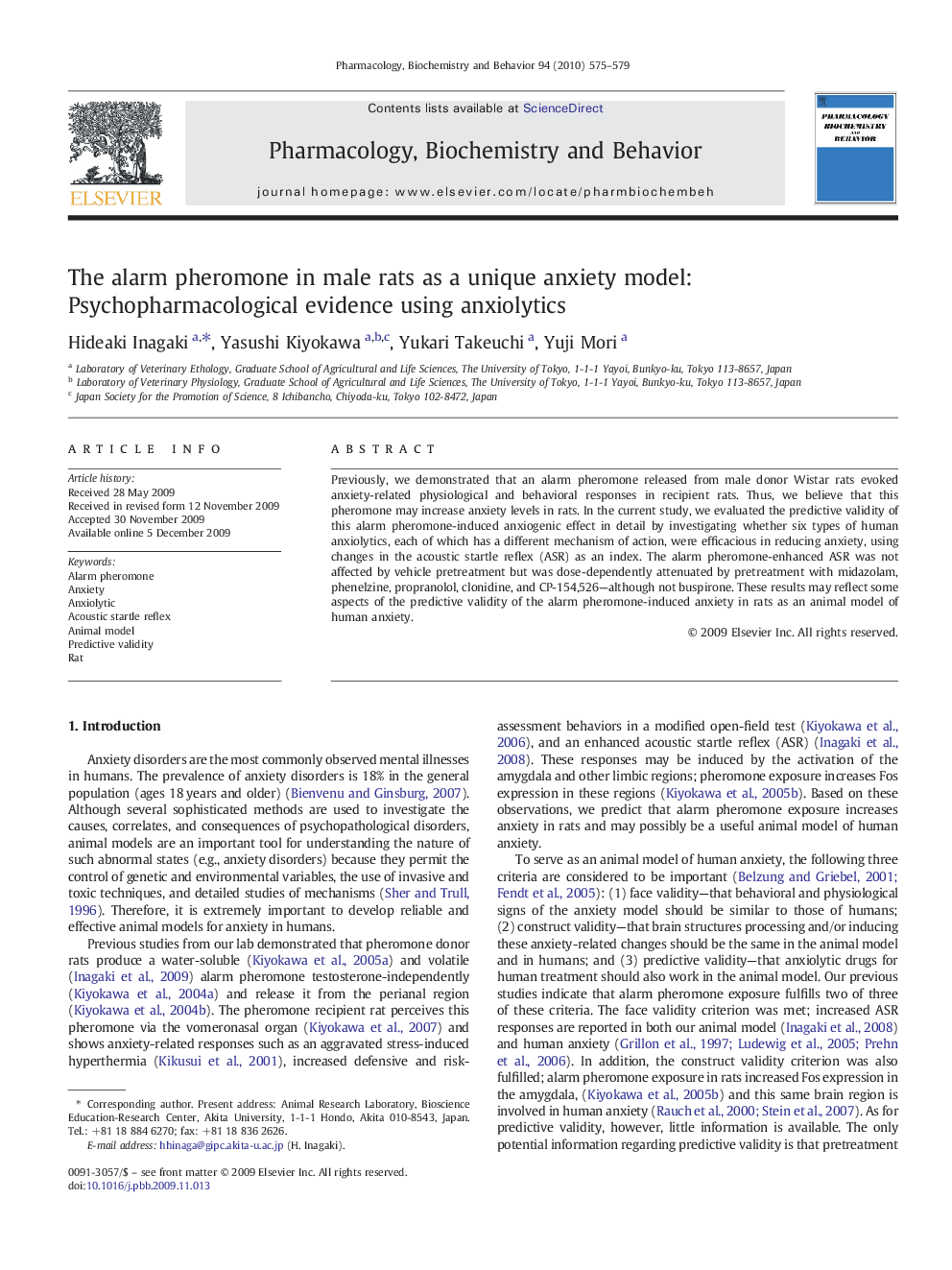| Article ID | Journal | Published Year | Pages | File Type |
|---|---|---|---|---|
| 2013459 | Pharmacology Biochemistry and Behavior | 2010 | 5 Pages |
Previously, we demonstrated that an alarm pheromone released from male donor Wistar rats evoked anxiety-related physiological and behavioral responses in recipient rats. Thus, we believe that this pheromone may increase anxiety levels in rats. In the current study, we evaluated the predictive validity of this alarm pheromone-induced anxiogenic effect in detail by investigating whether six types of human anxiolytics, each of which has a different mechanism of action, were efficacious in reducing anxiety, using changes in the acoustic startle reflex (ASR) as an index. The alarm pheromone-enhanced ASR was not affected by vehicle pretreatment but was dose-dependently attenuated by pretreatment with midazolam, phenelzine, propranolol, clonidine, and CP-154,526—although not buspirone. These results may reflect some aspects of the predictive validity of the alarm pheromone-induced anxiety in rats as an animal model of human anxiety.
